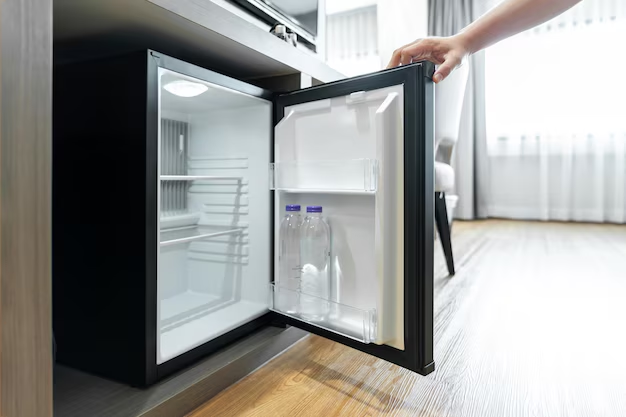Understanding Your Refrigerator’s Defrost Cycle: When and Why It Runs
Have you ever noticed that your refrigerator seems to empty itself of frost and wondered how it keeps itself in check? A key component of a modern refrigerator’s operation is its defrost cycle. Understanding how often the defrost cycle runs, and why, can help homeowners manage their appliances better, potentially leading to enhanced efficiency and longevity. This knowledge can also be a valuable tool in troubleshooting frost-related issues that may arise.
The Basics of Refrigerator Defrost Cycles
What Is a Defrost Cycle?
A defrost cycle is an automatic process used by refrigerators to remove the frost buildup on their cooling coils. Over time, this frost can impede the appliance's efficiency, making the defrost cycle a crucial aspect of refrigerator maintenance.
How Does It Work?
In most refrigerators, the defrost cycle is automated. It typically involves the refrigerator shutting off its cooling component for a short period while turning on a heating element to melt the frost. Once the frost is melted into water, it is channeled away, leaving the refrigerator free of frost.
How Often Does a Refrigerator Defrost Cycle Run?
Standard Frequency
Most modern refrigerators have a defrost cycle that operates every 8 to 12 hours. This timeframe ensures that frost does not have the chance to accumulate and impede the appliance’s efficiency.
Variability Based on Model and Design
The exact frequency can vary based on the refrigerator's make and model. Some refrigerators come equipped with adaptive defrost controls that adjust the frequency based on usage patterns, thereby optimizing energy consumption.
Energy Star Guides
Energy-efficient refrigerators may have slightly longer intervals between defrost cycles when designed to minimize energy use while maintaining optimal performance.
Factors Influencing Defrost Cycle Frequencies
Refrigerator Usage
Frequency of Door Openings: The more frequently the refrigerator door is opened, the more air (and moisture) enters, potentially increasing the frost accumulation and influencing the defrost cycle's frequency.
Ambient Temperature and Humidity: In environments with high humidity, refrigerators may require more frequent defrost cycles to manage excess moisture.
Type of Refrigerator
Frost-Free: Most modern refrigerators are designed to be frost-free, meaning they include a built-in automatic defrost system, reducing the need for manual interventions.
Manual Defrost: Older models or specialty refrigerators without built-in defrost systems require manual defrosting, generally dictated by the amount of frost present rather than a timed schedule.
Troubleshooting Defrost Cycle Issues
Signs of a Failing Defrost System
- Excessive Frost Build-Up: Indicates the defrost system may not be activating as it should.
- Increasing Energy Bills: A non-functioning defrost cycle may cause the refrigerator to work harder, consuming more energy.
- Inconsistent Temperatures: If the defrost system fails, temperatures inside may fluctuate.
Steps to Evaluate the Defrost System
- Listen for Cycle Sounds: Typical sounds may indicate the cycle is active.
- Inspect the Coils: Regular checks can reveal unusual frost accumulation.
- Consult User Manuals: Understanding your specific model can help in identifying how your refrigerator's defrost cycle is designed to work.
- Professional Evaluation: If issues persist, seeking appliance repair services may be necessary.
Enhancing Refrigerator Efficiency
Tips to Optimize Performance
- Regular Cleaning: Keep the coils clean and free from dust build-up.
- Seal Inspection: Ensure door seals are intact to avoid moisture entry.
- Appropriate Loading: Avoid overfilling as it can block air circulation.
Energy Conservation Strategies
- Strategic Placement: Position the refrigerator away from heat sources.
- Temperature Settings: Maintain temperature settings as recommended in the manual.
- Smart Usage: Limit the number of door openings to help reduce the defrost cycle's activation frequency.
Consumer Tips & Key Takeaways
To keep your refrigerator running smoothly and efficiently, consider the following practical tips:
- 🕗 Monitor Cycle Frequency: Be aware of any changes in defrost cycles to identify potential issues early.
- 🌡️ Check Temperature Settings: Consistently check and adjust temperature settings for optimal appliance performance.
- 🧹 Maintain the Unit: Regular cleaning of coils and seals can prevent the need for more frequent defrosting.
- 💧 Keep Moisture Levels in Check: Use dehumidifiers in naturally humid climates to support less frequent defrosting.
The Future of Refrigerator Technology
As technology advances, refrigerators are increasingly using smart systems and sensors to predict and adjust the defrost cycle dynamically. This innovation not only contributes to energy efficiency but also aligns with modern environmental considerations, appealing to consumers seeking greener household options.
Understanding the intricacies of your refrigerator's defrost cycle, how it functions, and how often it should run empowers you to make informed decisions that enhance both performance and reliability. With mindful management and regular maintenance, a refrigerator can operate efficiently, maximizing its lifespan and effectiveness in keeping your food fresh.
